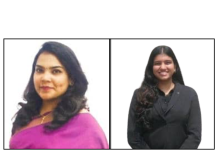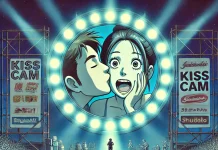Introduction:
In TVF Media Labs Private Limited & Ors vs the State [Government of National Capital Territory (NCT) of Delhi], the Delhi High Court strongly objected to the ‘obscene’ and ‘profane’ language used in the web series, ‘College Romance’ based on college friendships and relationships. The Court upheld an order of the Additional Chief Metropolitan Magistrate (ACMM) to register an FIR against TVF (The Viral Fever), the show’s Director Simarpreet Singh and actor Apoorva Arora.
‘College Romance’ a web series, created by TVF streams on over the top (OTT) platform, TVFPlay and YouTube. It can be viewed by everyone on YouTube without any age restriction. A complaint was filed against TVF, the Director and one of the Actor of the web series for using vulgar and obscene language in Episode 5 of Season 1 – ‘Happily Fucked Up’ which aired in September, 2018. Even the title was alleged as vulgar. It was put forth that the web series displayed an indecent representation of women in the worst form.
What was found to be ‘Obscene, Vulgar & Profane’?
- A particular scene in Episode 5 where the male protagonist ‘Bagga’ (played by Gagan Arora) is using foul language in front of the female protagonist, ‘Naira’ (played by Apoorva Arora) and the same foul language is later repeated by her. Naira threatens Bagga that if he continues using gaalis(insults) in every sentence, she will not kiss or have sex with him.
- Excessive use of swear words in Hindi. The male protagonist uses words describing male and female genitalia and sexual act, thus by words, painting pictures of sexually explicit act.
The State’s Arguments
- In the absence of regulations on OTT back in 2018, TVF has taken an advantage of the same.
- As per YouTube rules, if the uploader adds an age restriction warning to a video, it cannot be monetized. To avoid the same, TVF has not added an age restriction disclaimer.
- In the case of Samaresh Boss vs Amal Mitra[i], it was held by the Supreme Court that for judging whether the content is obscene; regard must be given to contemporary morals and national standards.
The Viral Fever – The Creator’s Arguments
- TVF has the fundamental right to Freedom of Speech and Expression and if the complainant does not like the content, he/she may not see it.
- If anyone were to walk through the corridors of any Delhi University college, they would hear the same language from the students. Would they all be booked under law?
- Language or behaviour on the show does not evoke lustful thoughts.
What the Delhi High Court held
- Justice Swarana Kanta Sharma said that she had to watch the episodes with earphones in the chamber as the profanity of language used was such that it could not have been heard without shocking the people around. Further, such language does not represent the language of the people and cannot be heard sitting with elders or children.
- According to the Information Technology (Intermediary Guidelines and Digital Media Ethics Code) Rules, 2021, online curated content should be classified online curated content should be classified into U, U/A 7+ years and above, U/A 13+ years and above, U/A 16+ years and above, A rating.
- The show’s director Simarpreet Singh and actor Apoorva Arora are liable to face action under Sections 67[ii], 292[iii], 294[iv] of the Indian Penal Code and Section 67 A[v] of Information Technology (IT) Act.
- University of Delhi has its own glorious history, respect, and heritage. The college students cannot be said to be using such language and corrupt the minds which are impressionable and be told that this is the ‘new normal’ language in the colleges.
- The Court concluded that the Courts cannot do moral policing considering jurisprudence of judicial restraint, however, they cannot remain separate from civil social sciences.
Obscenity vs vulgarity- what is the jurisprudence? Whether use of vulgar words or content which is pornographic will trigger ‘obscenity’?
- Obscenity – Section 292, IPC gives 3 parameters to obscenity – if it is “lascivious”, appeals to prurient interest, corrupts, and depraves the mind of people who read, see or hear the matter. An observation is that concept of obscenity is usually attached to pornography and the word ‘obscene’ is used synonymously with the word ‘porn’.
- A comparison between obscenity and vulgarity could be that vulgarity is associated with the feelings of disgust and aversion but does not “corrupt” the minds. While, obscenity contaminates the minds of the individuals who are exposed to such influence.
- “Obscenity” finds some context under the purview of Section 292, but ‘vulgar’ is not defined under law. While we do have an understanding that it is something which is disgusting, tasteless or gross, it cannot be used interchangeably with ‘obscenity.’
- The classic example of how MF Hussain’s painting got into trouble sheds some light into this. He painted a nude version of a female associating her with ‘Bharat Mata’ for a charity auction. The people found it ‘obscene’ as well as ‘vulgar.’ But the Court held that the painting would certainly not arouse sexual interest and nudity cannot be associated with obscenity.
- The definitions of ‘obscenity,’ ‘vulgarity’, indecency’ are vague, subjective and the tests formulated by Courts throughout the world, be it Hicklin’s test, Community Standards Test or the Miller Test are referred to if a judicial proceeding on obscenity ever arose.
- Hicklin’s Test – “something which depraves and corrupts those whose minds are open to such immoral influences” . While we may think Hicklin’s test is like Section 292 of the IPC, the key difference was that Hicklin’s test required the matter to viewed separately and in isolation while the IPC requires the matter to be taken as a whole.
- Community Standards Test – “materials which have a tendency of exciting lustful thoughts can be held obscene. Contemporary standards of the common, average man would be taken into consideration”. The test states that any gesture, or content is obscene only if the dominant theme taken is opposed to contemporary community standards. An ordinary man’s common sense will be the yardstick to determine obscenity. The landmark judgment of Bobby Art International, Etc vs Om Pal Singh Hoon[vi] defined the Community Standard Test and laid down the obscenity laws in India. The iconic saga of Phoolan Devi in the film, Bandit Queen depicted the true story of a woman who was raped and dehumanized. A complaint was filed against the makers of Bandit Queen for obscenity, that such content would correct the minds of the audience. The Supreme Court of India held that the scenes containing nudity and graphic violence cannot be restricted because of the content. The scenes which were alleged to be of obscene nature were an essential portrayal of Phoolan Devi’s tragic story.
- Miller Test – For a work to be not held as obscene, it needs to fail three aspects of the same.
- If a person having contemporary community standard does not think the work pleases or aggravates a voyeuristic interest
- The work is offensive
- The work lacks scientific, artistic or political value in the work in its entirety.
Miller Test considered aspects like the ‘scientific, literary, political’ value and even if the work depicts sexual conduct in an offensive way.
The Relevance of the Information Technology (IT) Rules, 2021
- Let us understand the roots of the IT Rules, 2021. – they have been stemmed from Section 87 of the IT Act, 2000 and are a combination of the Draft Intermediaries Rules, 2018 and OTT Regulation and Code of Ethics for Digital Medi
- The main ingredients of the Rules include – 1. Code of ethics 2. Three-tier grievance redressal mechanism 3. Content classification.
- The government is already facing legal challenges in its attempt to control and censor OTT platforms through the rules as both the provisions of “Code of Ethics” and content classification have been stayed by multiple high courts.
- The Bombay High Court in August, 2021 stayed the operation of the Rules 9(1) and 9(3) of the IT Rules, 2021 which deals with compliance to the “Code of Ethics” and the three-tier mechanism. The Court found these rules are violative of Article 19(1)(a) of the Constitution. Moreover, the Madras High Court stayed a few more portions with regards to Rule 3 and 7 that require social media platforms to take down content that violate norms.
- This effectively means, there is an unclear perspective regarding the IT Rules, 2021 and OTT platforms are not required by law to have a three-tier grievance redressal mechanism or follow the ethics code. Even draft amendments to the IT Rules released in 2022, are still vague and have uncertain provisions.
Conclusion:
While College Romance’s portrayal of Delhi University students is questionable, the makers of the show certainly should have added an ‘A’ rating as well as restricting viewers below the age of eighteen, mostly the impressionable youth on YouTube. From a legal perspective, the test of obscenity in any kind of films, music, books have not been laid out in India. According to Section 292 of the Indian Penal Code, any form of content found to be ‘obscene’ tends to corrupt the minds of people who consume it. The words ‘obscene,’ ‘vulgar,’ ‘profane’ have not been defined in the IPC and might be subjective amidst different generation of individuals having a perspective on the same. To overcome this subjectivity, tests like Community Standard Test, Miller Test have been established through judicial precedents.
To strike a balance between free speech, freedom of expression and allowing the percolation of content which is obscene and makes sexually explicit remarks is a task. However, use of such profane language, considering it is accessible to minors, should be condemned. Rightly worded by the Judge, words and languages are a very powerful medium and the power of obscenity and sexual explicitness of language cannot be undermined. A quasi-judicial body approach should be adopted in this regard, wherein the decision of the body will be final and conclusive. This will be a solution to the parallel criminal proceedings and lessen the burden of the Courts that are filled with frivolous litigations against OTT content.
About the Author:
Mridula Bhat is a third-year student at Government Law College, Mumbai. She is currently interning with Tulsea, a talent management agency, and has prior experience at the Chambers of Advocate Hiren Kamod.
End notes:
[i] (1985) 4 SCC 289
[ii] Publishing or transmitting, in the electric form, any material which is obscene.
[iii] Sale of obscene books, pamphlets, paper, writing, drawing, painting, representation, figure or any other object.
[iv] Punishment for obscene acts in public.
[v] Punishment for publishing or transmitting of material containing sexually explicit act.
[vi] AIR 1996 SC 1846

















